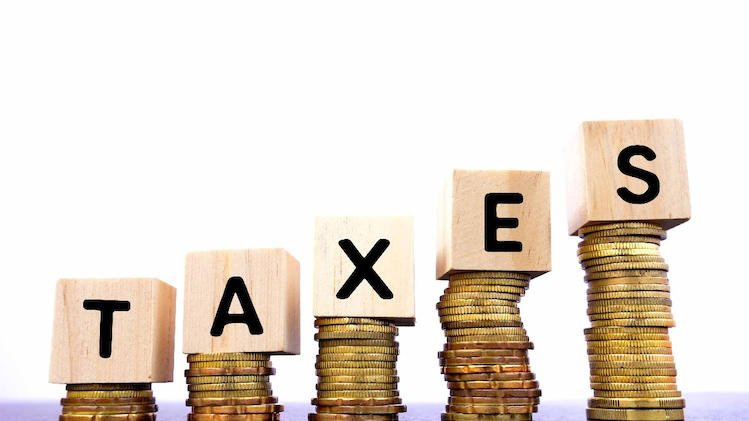New Capital Gains Tax Rules
New Capital Gains Tax Rules The Union Budget 2025, presented by Finance Minister Nirmala Sitharaman, introduced critical updates to India’s capital gains tax regime. While the holding periods and tax rates for long-term capital gains (LTCG) and short-term capital gains (STCG) remain the same, the Finance Bill 2025 brought clarity and changes to specific areas. This includes taxation for Unit Linked Insurance Plans (ULIPs), Alternative Investment Funds (AIFs), and Foreign Institutional Investors (FIIs).
The new provisions take effect from April 1, 2026, for the Assessment Year 2026-27. Here’s a deep dive into the latest changes and their implications for different asset classes.

What Remains Unchanged?
Despite expectations of a broad overhaul, the capital gains tax structure largely remains the same in terms of holding periods and tax rates. New Capital Gains Tax Rules The categorization of assets into short-term and long-term remains unchanged, as does the taxation method for listed shares, equity mutual funds, unlisted shares, tax-free bonds, and real estate.
However, Budget 2025 addressed several gray areas in the taxation of ULIPs, AIFs, and securities held by FIIs, providing more clarity and consistency.
- Unit Linked Insurance Plans (ULIPs) – New LTCG Tax at 12.5%
Effective Date: April 1, 2026 (Assessment Year 2026-27)
New Tax Rule: ULIPs with annual premiums exceeding ₹2.5 lakh will be taxed at a 12.5% long-term capital gains (LTCG) rate, similar to equity mutual funds.
Why This Change?
Earlier, there was significant confusion regarding the taxation of ULIP gains. ULIPs, which combine life insurance with equity and debt investments, were sometimes taxed as income from other sources or not taxed at all due to ambiguity.
Budget 2025 has now aligned ULIP taxation with that of equity mutual funds. The Finance Bill 2025 specifies that any amount received from ULIPs where the Section 10(10D) exemption does not apply will be taxed as capital gains.
Impact:
- High-premium policies are directly affected, especially those with an annual premium of over ₹2.5 lakh.
- Investors should note that ULIPs held for over a year will now be treated as long-term capital assets and taxed at 12.5%.
- LTCG Tax Hike for FIIs and Specified Funds – 12.5% from April 2026
Effective Date: April 1, 2026 (Assessment Year 2026-27)
New Tax Rule: LTCG on securities not covered under Section 112A will be taxed at 12.5% for FIIs and specified funds.
Key Clarification:
- Earlier, FIIs were taxed at 10% on long-term capital gains for certain securities, such as government bonds and non-convertible debentures (NCDs).
- However, the tax rate for listed shares, equity mutual funds, and business trusts was raised to 12.5% in 2024. Budget 2025 corrects this inconsistency, ensuring that LTCG tax rates are uniformly applied at 12.5% for all securities held by FIIs under Section 115AD.
Why This Change?
The change aligns the tax rate for foreign investors with those applicable to residents, reducing discrepancies in the taxation framework.
FII Investment Trends:
- In 2024, FIIs invested only ₹1,600 crore in the Indian stock market on a net basis, a 99% drop from ₹1.71 lakh crore in 2023.
- The significant outflows from October 2024 were driven by an economic slowdown and weaker corporate earnings.
- Alternative Investment Funds (AIFs) – New 12.5% Capital Gains Tax
Effective Date: April 1, 2026 (Assessment Year 2026-27)
New Tax Rule: Category I and II AIFs will be taxed on capital gains at 12.5%, bringing much-needed clarity to the taxation of these funds.
Current Taxation Structure:
- Category I and II AIFs enjoy pass-through taxation, meaning income is taxed at the investor level, not the fund level.
- Category III AIFs, however, do not get this benefit and are taxed at the fund level.
What’s New?
The Finance Bill 2025 expands the definition of “capital asset” to include gains made by AIFs, ensuring that such income is taxed as capital gains at 12.5%.
Why This Matters:
- If this income were treated as business income, it could attract a much higher tax rate — 30% for residents and up to 39% for non-residents.
- This change reduces the tax burden on investors and promotes transparency.
Who Will Be Affected?
Category I and II AIFs, which primarily invest in unlisted companies, debt instruments, and infrastructure projects, will benefit from this clarification.
Conclusion
The Budget 2025 capital gains tax updates aim to simplify and streamline the taxation of complex investment structures. New Capital Gains Tax Rules These changes offer much-needed clarity for investors, particularly in ULIPs, AIFs, and FIIs.
Key Changes Recap:
- ULIPs with premiums over ₹2.5 lakh – 12.5% LTCG tax from April 2026
- FIIs and specified funds – Uniform 12.5% LTCG tax on securities under Section 115AD
- Category I and II AIFs – 12.5% capital gains tax on income treated as capital assets
What Should Investors Do?
- Review Portfolios: Analyze how these changes will impact your investments in ULIPs, AIFs, and securities held through FIIs.
- Tax Planning: Plan investments carefully to minimize tax liability under the new rules.
- Consult Experts: Seek advice from tax professionals to ensure compliance and maximize tax benefits.
These new rules will come into effect from April 1, 2026, so investors have time to adjust and optimize their financial strategies accordingly.
For More Information :https://taxgyany.com/

